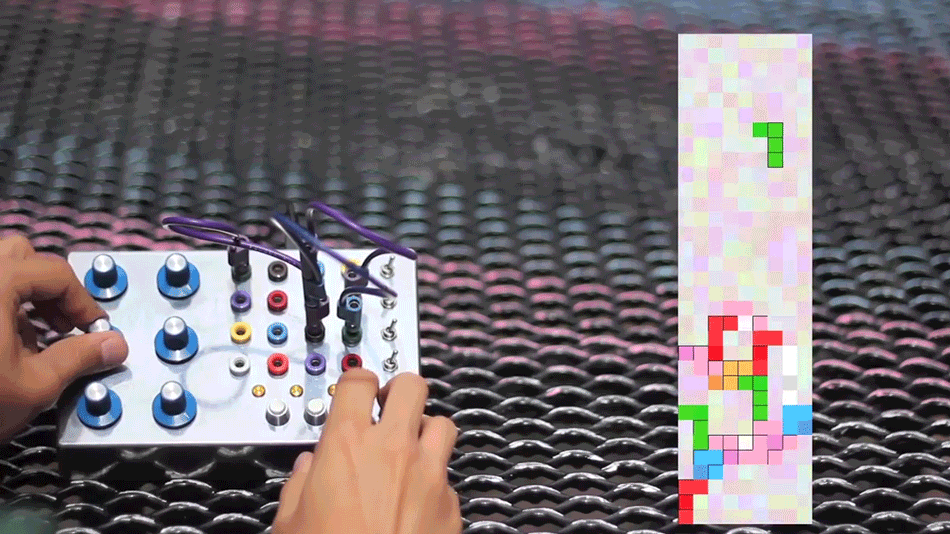Remixing a Biggie Smalls song by playing Tetris. Using a joystick to update a website’s design in real time. Playing Mario with a synthesizer. They sound like scenarios from some hacker fantasyland, but Providence-based artist Chris Novello has done them all.
Novello works with a homebuilt device called illucia, which allows him to treat programs on his computer like components in a modular synthesizer, connecting them in unorthodox ways and forcing them into chaos.
Above, the output of a Tetris-like game transforms The Notorious B.I.G.’s “Juicy” into something akin to the hyperactive beats of Hrvatski or Aphex Twin. In a video we posted last year, Novello used illucia and a device called a Soundplane to turn Super Mario Bros. into a flickering hellscape of glitches and loops. The Soundplane, which would ordinarily be used to control a synthesizer or other digital instrument, was messing with Mario‘s raw code as he played.
“When you use the personality of one program to control another, strange and interesting behaviors emerge,” Novello tells ANIMAL. “I think of it as playing a network of software the way one might play a video game or musical instrument — coaxing audiovisuals from a chaotic system built out of video games playing each other.”
Novello recently began selling illucias on his site for about $500. Each is handbuilt, and includes a suite of software Novello developed to interact with the device. You get everything from games to glitch out to text editors and paint programs, making it possible to create all the data-driven conceptual poetry and generative MSPaint masterpieces you’ve ever dreamed of.
At the heart of the illucia is an Arduino — an inexpensive device that converts analog signal to digital data and vice versa — and the Open Sound Control protocol — a computer language that’s ordinarily used to communicate with digital musical instruments. And while it would be possible to make illucia’s inter-program connections entirely within software, according to Novello, there’s something more satisfying about twiddling around with physical knobs, buttons, and cables.
“I made a patchbay because I think it is a great tangible interface,” he says, referring to the interconnected systems of cables and jacks often found in recording studios or on old-school electronic instruments. “In our world of pictures behind glass, it is nice to have strong visual and physical feedback on an interface. I started illucia by making connectable OSC games, but I quickly got bored using a mouse and keyboard to control them.”
The artist’s Vine and Vimeo accounts give a sense of the range of what’s possible using the illucia: there’s the automated drawing machine controlled by Zelda enemies, music software that generates Mondrian look-alikes, an in-game kinetic sculpture created by feeding a metronome into the code behind Doom 2. Any program you can rig to handle OSC data becomes a paintbrush or its corresponding canvas.
Novello, who teaches courses in experimental web design, conceptual writing, and viral media at Brown, says his interest in building illucia came in part from pushing forward the idea of what gaming can be. “I think that medium still has tons of unexplored potential and I’d love to see more people pushing it to new places,” he says. “I want to live in a world where more people are empowered to create their own computer interfaces and software.”



